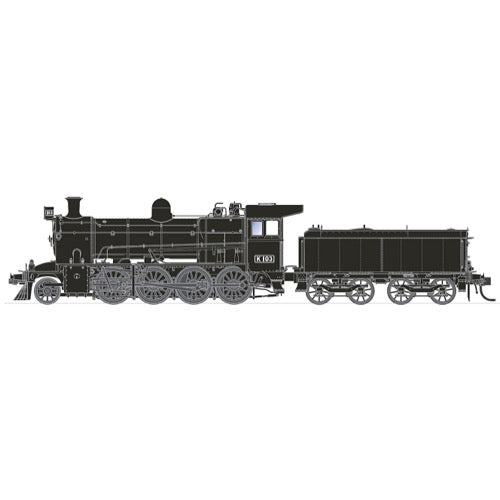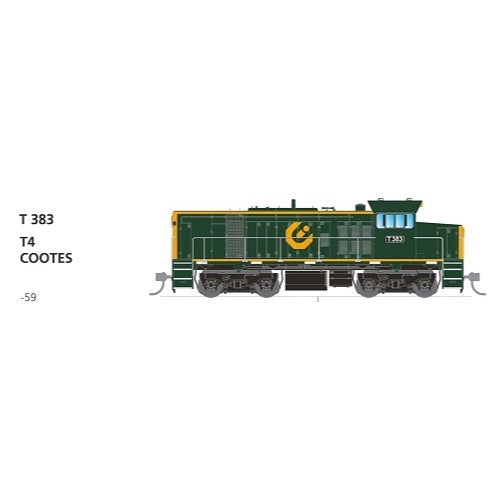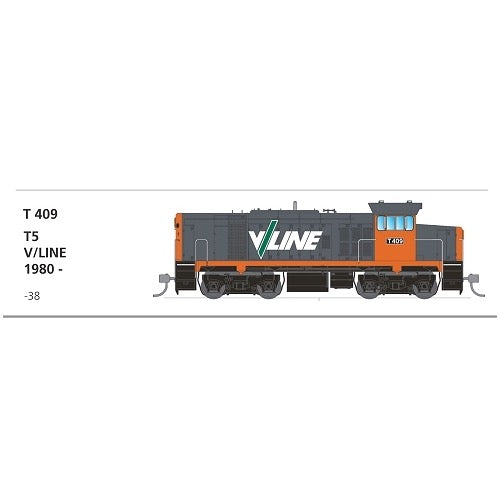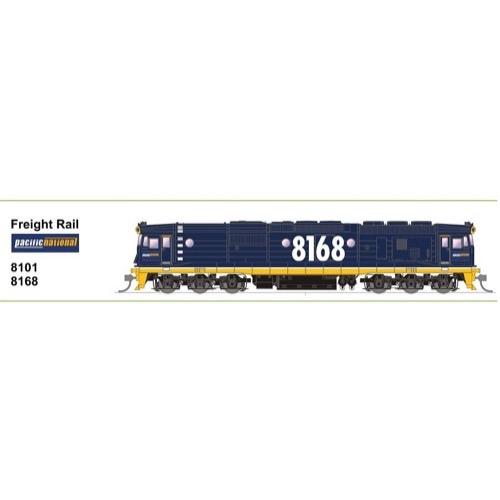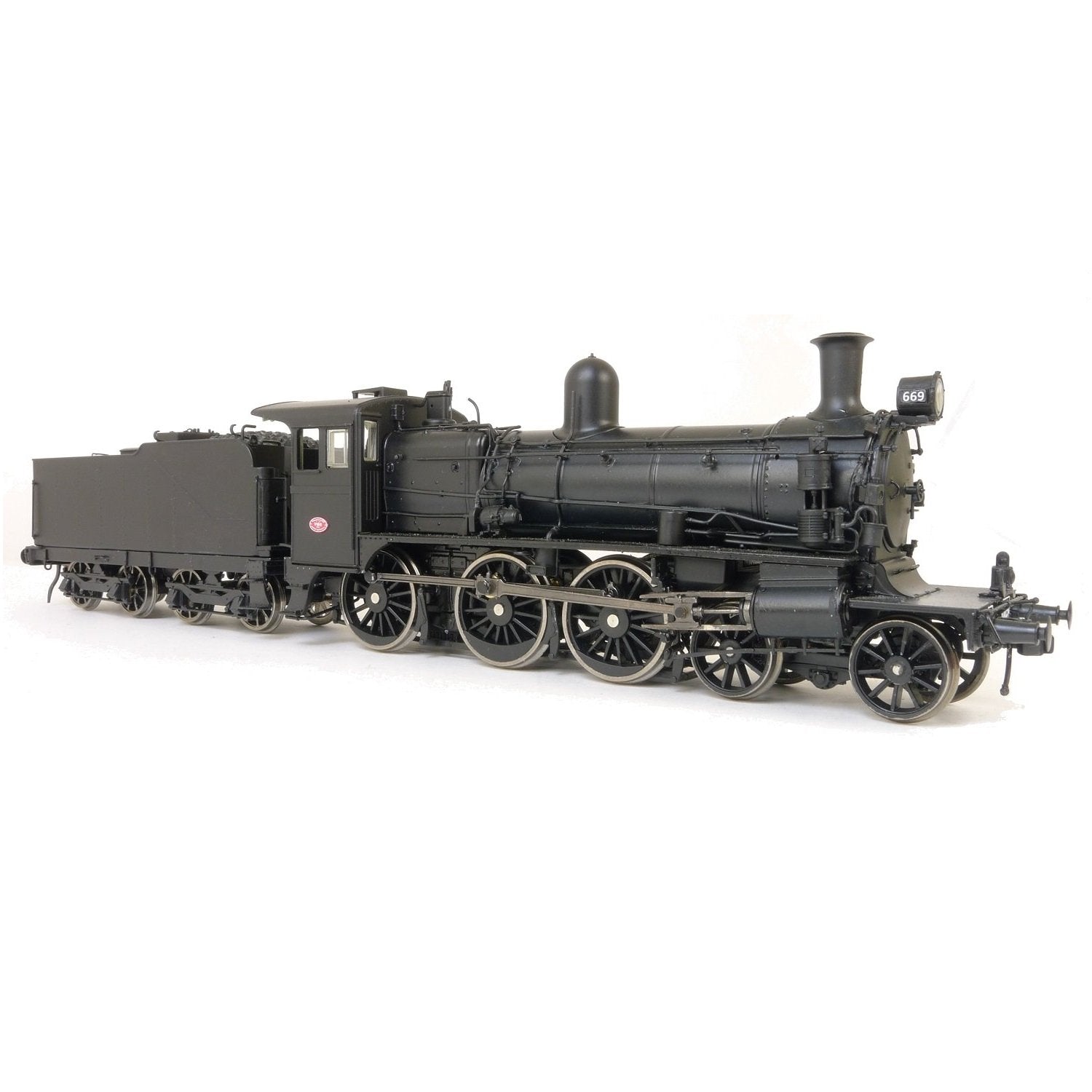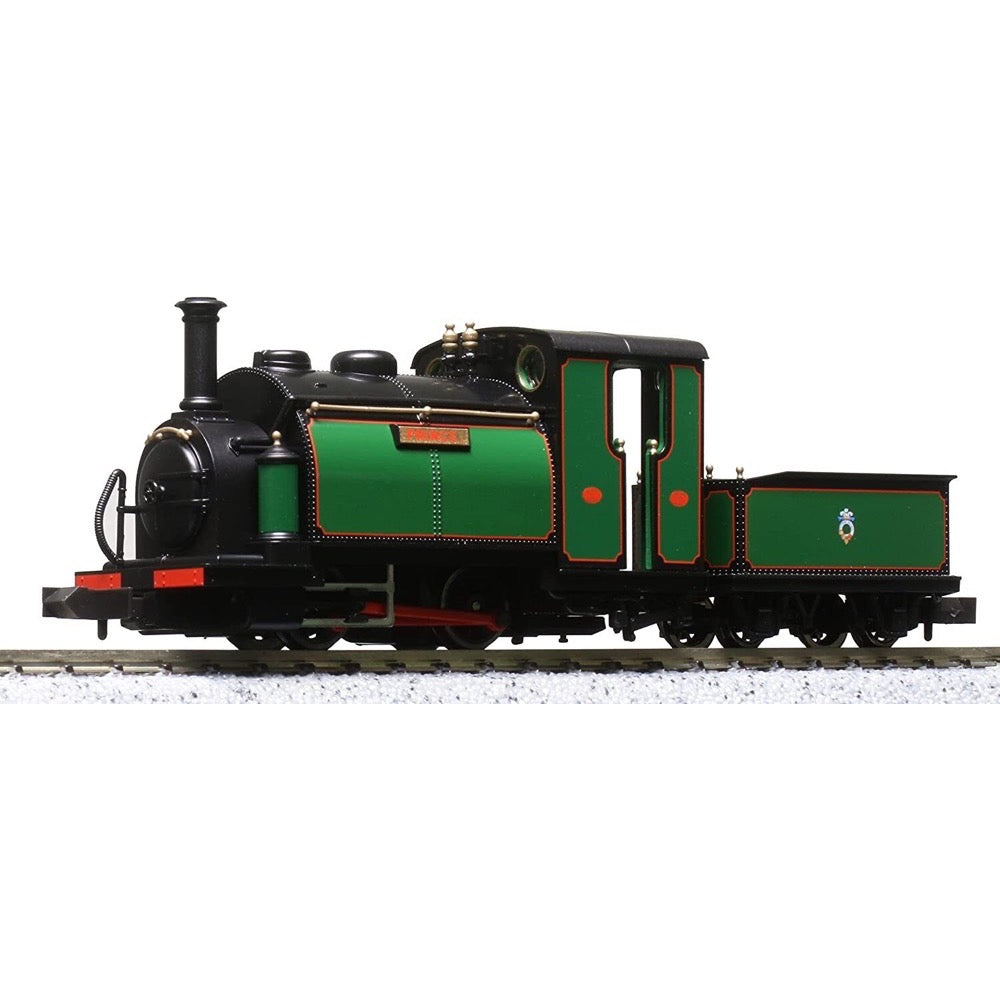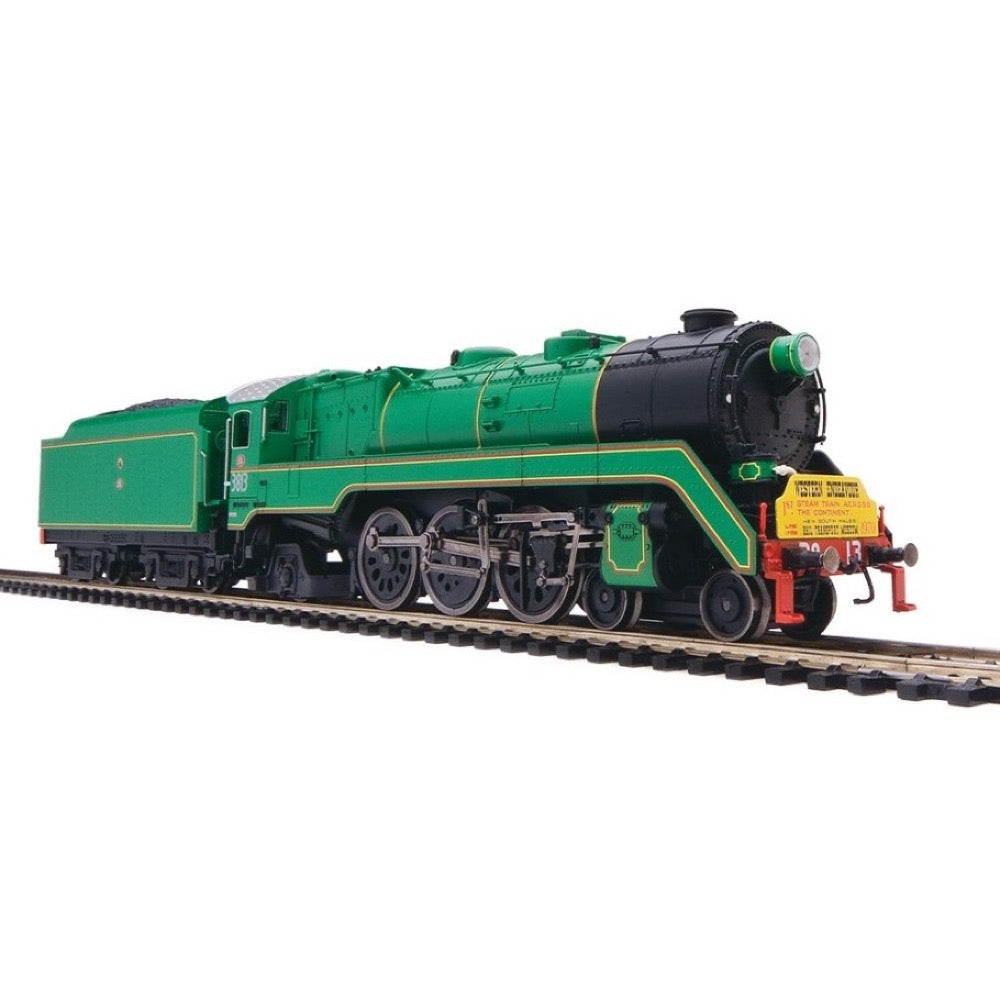
Australian Railway Models 87006 C38 Class 4-6-2 Pacific Express Passenger Locomotive (Western Endeavour)
112.00
$
<p>The Western Endeavour locomotive was a celebration of the completion of the Sydney to Perth railways line conversion to Standard gauge. The New South Wales Rail Transport Museum operated the Western Endeavour as a special steam locomotive on the new rail line, at a time when steam locomotives were being withdrawn from service. Departing Sydney Central on the 22nd of August 1970, the Western Endeavour arrived at East Perth on the 28th of August 1970.</p>
<p>The East to West coast journey was hauled initially by two locomotives C3801 and C3813, with C3813 assisting until Port Augusta. During its stay in South Australia, the C3813 was used for tours.</p>
<h3><strong>Features</strong></h3>
<ul>
<li>Detailed cabin interior including floating foot plate</li>
<li>Separately applied detailed body parts</li>
<li>Realistic mechanical mechanisms</li>
<li>Authentic knuckle-style coupler</li>
<li>Dual position drawbar for close tender coupling</li>
<li>H0 Gauge</li>
<li>DCC ready with 8-pin socket<br>
</li>
</ul>

Hornby R30332 GBRf Class 66 Co-Co 66734 Platinum Jubilee 2014 - 2024 Locomotive
71.00
$
<p>No. 66734 ‘Platinum Jubilee’ was in service in Europe as No. PB04 and imported from Germany for GB Railfreight use in early 2022. It’s GBRf’s 100th Class 66. This locomotive replaced the previous 66734 which hit a landslide and derailed down an embankment at Loch Trieg in June 2012.</p><p>The original 66734 was cut up on site as there were issues with recovering it from the isolated location. On 1st June 2022, ‘Platinum Jubilee’ was outshopped from Arlington Fleet Services in a royal purple and grey livery. The official Jubilee logos were included in the livery and a large Union Jack flag was painted on the bodysides. Vinyl ‘Platinum Jubilee’ nameplates were incorporated.</p><p>Replicating the prototypical Class 66 locomotive, our model sports a royal purple and grey livery for the Platinum Jubilee that was painted in 2022. A special Union Jack flag adorns the sides of the model. This model is DCC-ready and compatible with our HM7000 21-pin decoder. The accessory bag contains a pair of snow ploughs, four vac pipes and two moulded coupling links.</p><h3>Specifications</h3><ul>
<li>Item Length - Without Packaging (cm): 28</li>
<li>Item Height - Without Packaging (cm): 5</li>
<li>Item Width - Without Packaging (cm): 3.5</li>
<li>Item Weight - Without Packaging: 0.48</li>
<li>Item Scale: 1:76 Scale 00 Gauge</li>
<li>Finish: Painted</li>
<li>Colour: Purple</li>
<li>Gauge: OO</li>
<li>DCC Status: DCC Ready 21 pin socket</li>
<li>Operator: GBRf</li>
<li>Designer: Electro-Motive Diesel</li>
<li>Wheel Configuration: Co-Co</li>
<li>Livery: GBRf Purple</li>
<li>Minimum Curve (mm): Radius 2</li>
<li>Motor: 3 Pole</li>
<li>Number of Parts: 1</li>
<li>Class: Class 66</li>
<li>Buffer Type: Separate Plastic Buffers</li>
<li>Coupling Type: NEM Couplings</li>
<li>Hornby Decoder Compatibility Primary: HM7000-21TXS: Bluetooth® & DCC Sound Decoder (21-pin)</li>
</ul>
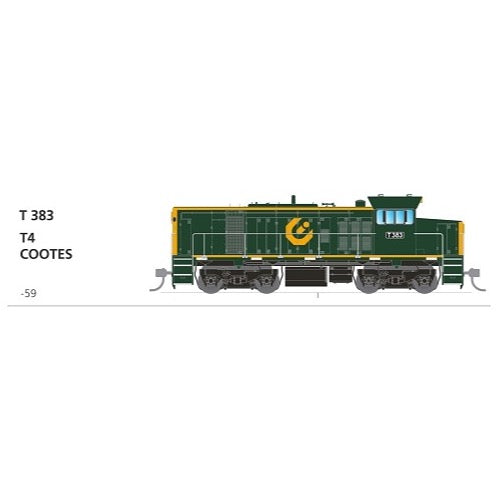
SDS Models HO T383 Cootes T4 Series T Class Locomotive
123.00
$
<p>SDS Models HO T383 Cootes T4 Series T Class Locomotive</p>
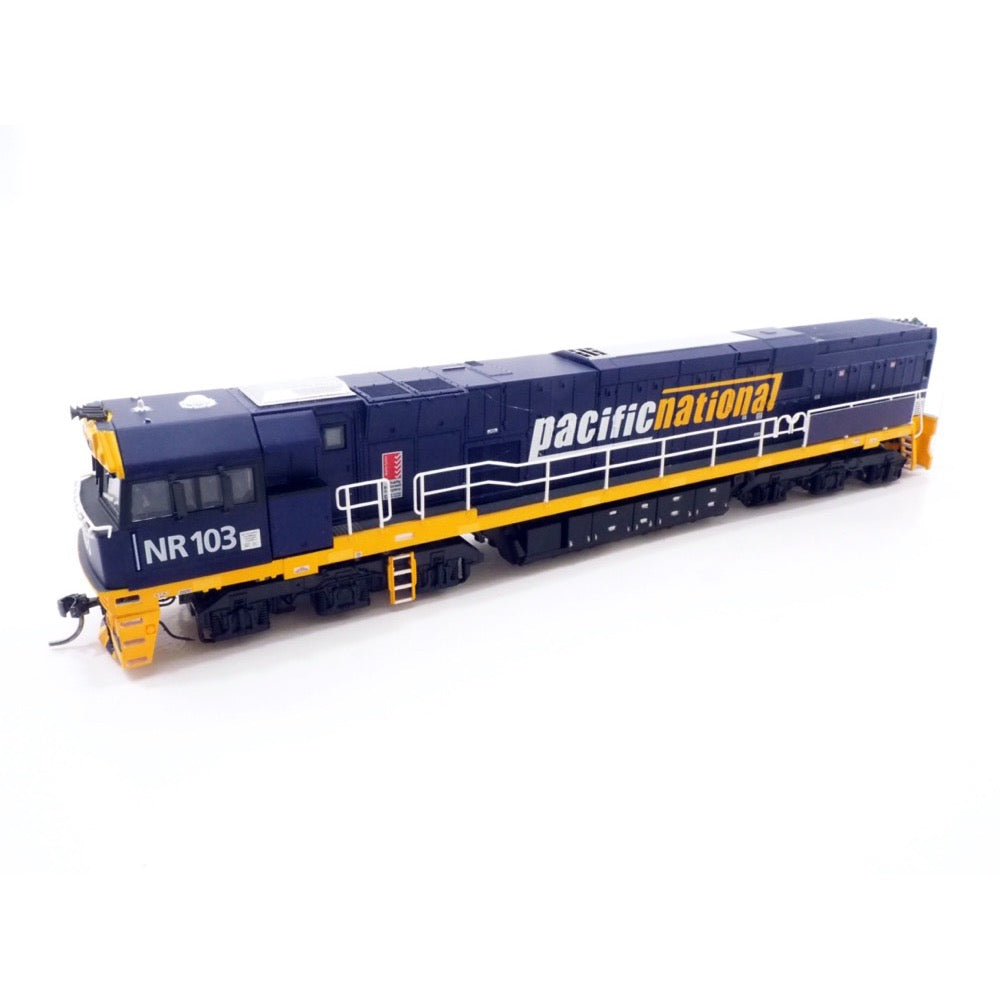
SDS Models HO NR103 Pacific National All Blue NR Class Locomotive
123.00
$
<h3>Model Features:</h3>
<ul>
<li>Highly detailed Ready-to-Run HO gauge model</li>
<li>Precisely tooled plastic body (ABS)</li>
<li>Genuine Kadee scale head whisker coupler</li>
<li>Separately applied handrails and detail parts</li>
<li>5-Pole skew wound electric motor and dual flywheels</li>
<li>All wheel drive and electrical pickup</li>
<li>LED headlights, marker lights, number boxes and ditch lights</li>
<li>All models come standard with an MTC 21 pin motherboard</li>
</ul>
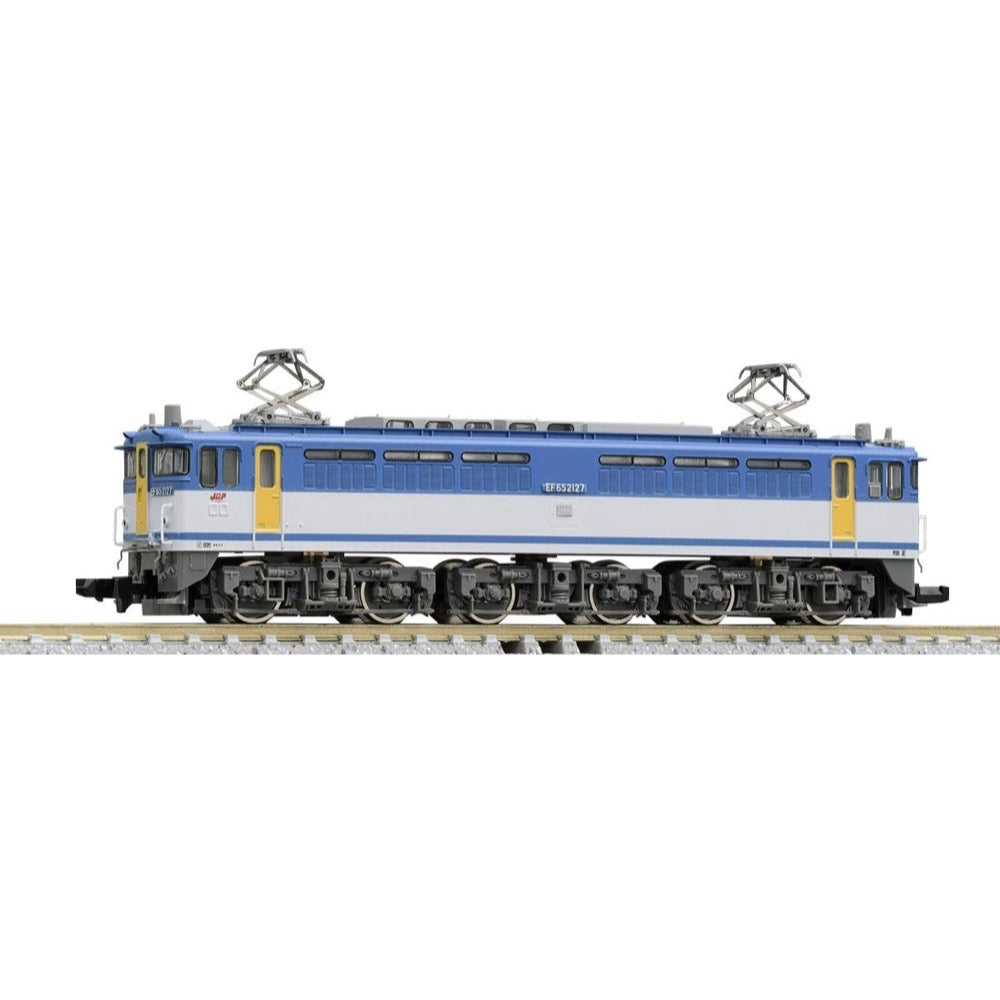
Tomix 7135 N 7135 EF652000 No.2127 JR Cargo Refresh
50.00
$
<p>The 2000 series was introduced in 2012, when the Ministry of Land, Infrastructure, Transport and Tourism issued a ministerial order to add 1000 to the original car number in order to distinguish between passenger company owned cars and those with or without safety devices.</p>
<p>The EF65-2127 has a distinctive mustard-colored gangway door.</p>
<h3>Features</h3>
<ul>
<li>Reproduces the EF65 No. 2127 with its distinctive mustard-colored through door</li>
<li>Number plate comes as a separate part "EF65-2127・1127"</li>
<li>Uses a new motor (M-13)</li>
<li>Headlights are lit by incandescent-colored LEDs</li>
<li>Headlights are equipped with a constant-lighting board</li>
<li>Self-coupling dummy coupler and TN coupler included</li>
<li>Roof-mounted monitor reproduced in gray</li>
<li>H-rubber reproduced in black</li>
<li>Front handrail (vertical) comes as a separate part</li>
<li>Release lever reproduced as a separate part (already installed)</li>
<li>Uses integrated plate wheel centering wheels</li>
<li>Uses power with flywheel</li>
<li>Uses gray bogie frame and silver wheels</li>
<li>Can run on mini curved rails</li>
</ul>
<h3>Contents</h3>
<p><strong>Vehicles</strong></p>
<ul>
<li>EF65-2000</li>
</ul>
<p><strong>Accessories</strong></p>
<ul>
<li>Runner parts: Number plate</li>
<li>Runner parts: Manufacturer's plate</li>
<li>Runner parts: Front handrail</li>
<li>Runner parts: Signal flare, whistle, radio antenna</li>
<li>Runner parts: Air conditioning duct</li>
<li>Parts: Automatic TN coupler</li>
<li>Parts: Automatic dummy coupler</li>
<li>Parts: Dummy coupler receiver</li>
<li>Parts: Jig</li>
</ul>
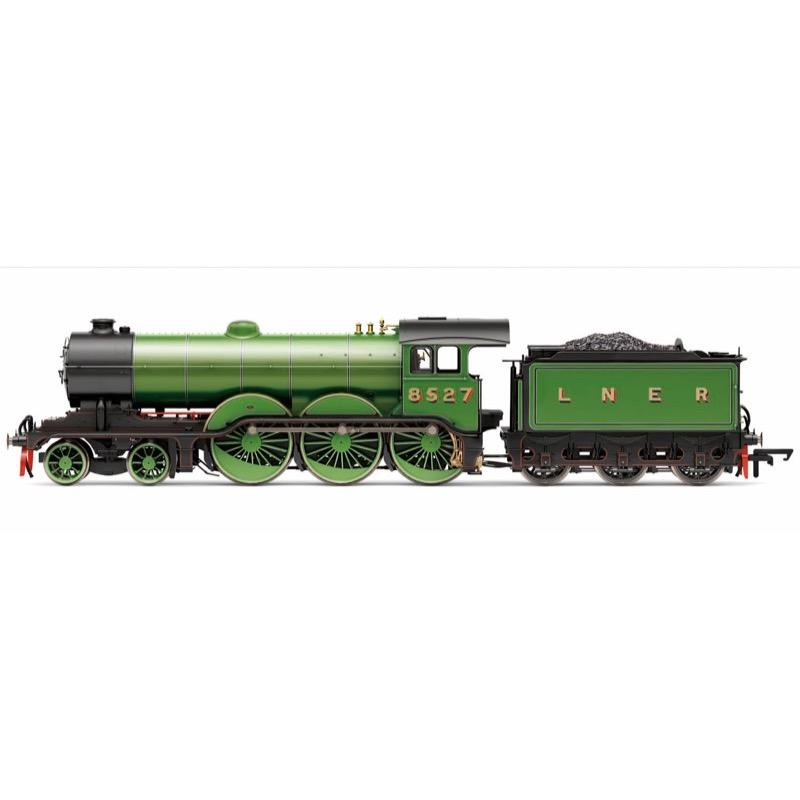
Hornby R3544 OO 4-6-0 Holden B12 LNER
150.00
$
<p>The restrictions on locomotive weight and length were keenly felt by the Great Eastern Railway and whilst James Holden's S46, D56 and H88 Claud Hamilton 4-4-0 designs were not unduly restricted, when he came to consider a 4-6-0 design for high performance express work, the inside cylinder was his only real option. To gain power, Holden was quick to embrace the idea of superheating and so in 1911, the first order was placed for his S69 class locomotive.</p>
<p>Under the GER, seventy one S69 engines were built, fifty one at Stratford and twenty at Wm Beardmore & Co. in Glasgow. The large enclosed cab with side windows and an extended roof were a noticeable feature of Holden's design which, allied to the large Belpaire firebox, decorative valance over the driving wheels and short 3,700 gallon tender, gave the impression of the locomotive being bigger than it actually was. Allocated throughout East Anglian sheds, the S69 saw sterling service hauling the Liverpool Street-Norwich mainline trains, as well as the Harwich Boat Trains, Cambridge and Great Yarmouth services. At Grouping in 1923, the S69 became classified as the LNER B12 and extended its range to Doncaster, Leeds and Manchester. The LNER's plans for 2-6-4T engines to operate services to Southend were abandoned following issues with the type's stability and so a further ten B12 locomotives were ordered from Beyer, Peacock and Co to fill the void, the design being fitted with vacuum ejectors, Lenz poppet valves and dual air and vacuum brakes and classified as class B12/2.</p>
<p>With large scale upgrading to the permanent way by the LNER, it at last became possible to increase the weight of locomotives and so a larger, round topped boiler pattern, with a bigger super heater was introduced, along with modified valve gear, resulting in a new B12/3 classification. Further modifications were carried out to the boilers of nine of the twenty five Scottish engines, this resulted in the final variation of the class, the B12/4.During 1944, due to their wide route availability, a number of the B12/3s were utilized to work on ambulance trains hauling air braked, American built stock, mainly in the West Country. To improve the loading gauge, the footsteps were cut back and holes cut into them, making them instantly recognizable in later years.</p>
<p>Seventy two locomotives entered British Rail service at Nationalization in 1948, further withdrawals taking place at regular intervals until the last locomotive, No.61572, was withdrawn in September 1961 and it is this engine that is preserved at the North Norfolk Railway. Locomotive 8527 was built at Stratford and entered traffic at Cambridge in August 1914, where it remained until October 31, 1927 when it was transferred to Ipswich. In April 1928, 8527 moved to Parkeston, followed by a brief move to Norwich in March 1929 before heading back to Cambridge in April that year. The ACFI feed was fitted in January 1932 at Stratford, being removed as the locomotive was rebuilt to a B12/3 in January 1935.</p>
<p>Maximum curve Hornby 2nd radius + / 438mm+.</p>
<h3>Specifications</h3>
<ul>
<li>Item Length - Without Packaging (cm): 36.2</li>
<li>Item Height - Without Packaging (cm): 6</li>
<li>Item Width - Without Packaging (cm): 11.2</li>
<li>Item Weight - Without Packaging: 0.58</li>
<li>Item Scale: 1:76 Scale 00 Gauge</li>
<li>License: Yes</li>
<li>License line: Licensed by SCMG Enterprises Ltd. National Railway Museum logo © SCMGE. Produced under licence for SCMG Enterprises Ltd. Flying Scotsman trade marks™ and designs©</li>
<li>Finish: Painted</li>
<li>Colour: Green</li>
<li>Gauge: OO</li>
<li>DCC Status: DCC Ready 8 pin socket</li>
<li>Operator: LNER</li>
<li>Designer: S. D. Holden</li>
<li>Wheel Configuration: 4-6-0</li>
<li>Livery: Green</li>
<li>Minimum Curve (mm): Radius 2</li>
<li>Motor: 5 Pole Skew wound</li>
<li>Number of Parts: 1</li>
<li>Class: Holden B12 Class</li>
</ul>


